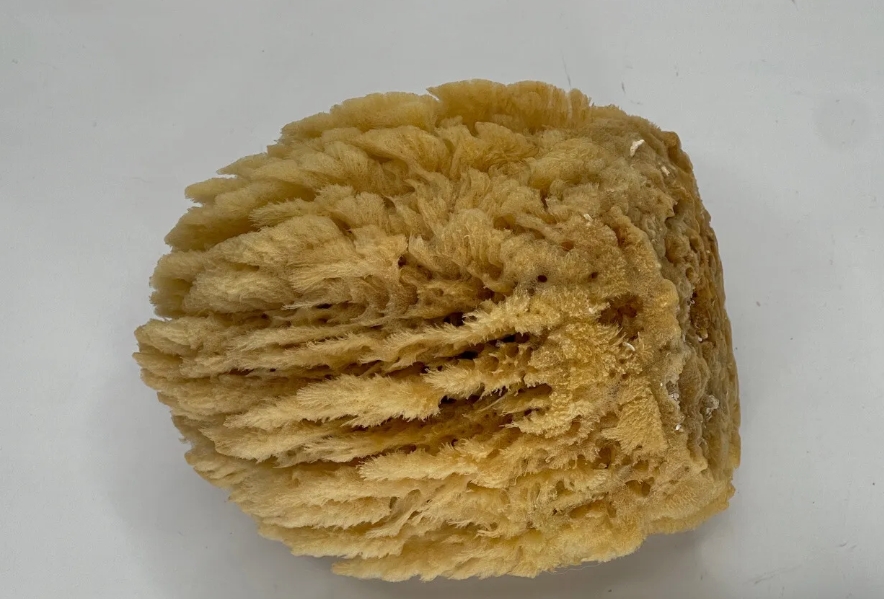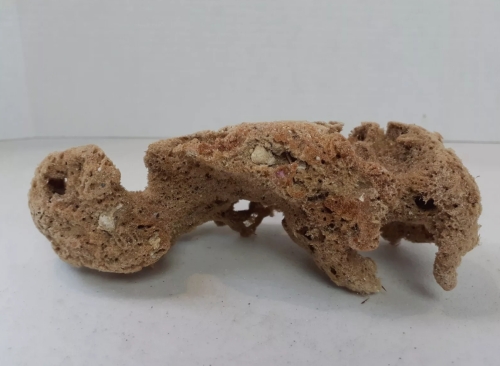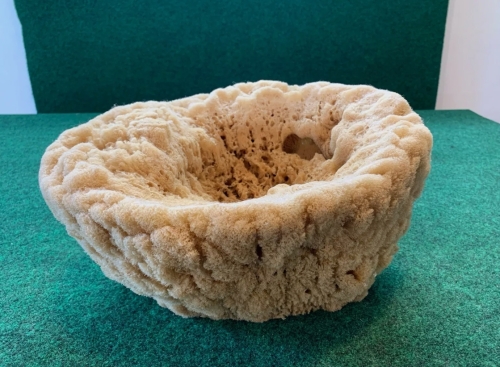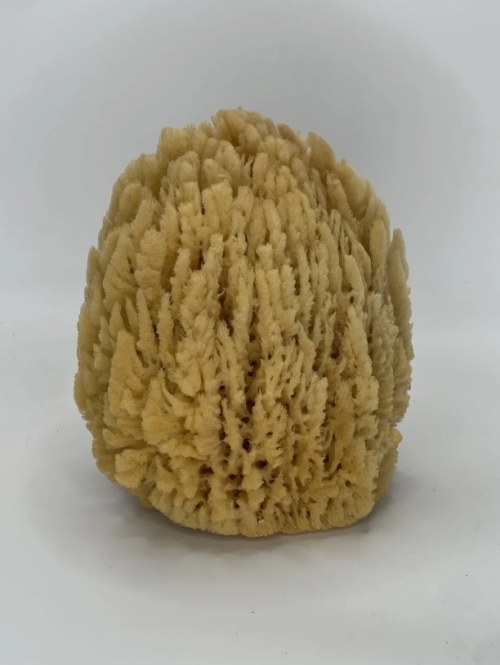Sponges are an ancient and unique group of creatures whose specimens display stunning forms and structures. Despite their apparent simplicity, sponges play an important role in ecosystems. As benthic organisms, they usually attach to the bottom of the water and obtain nutrients through special filtration systems. The sponge's body is made up of many small holes and channels, which allow water to flow through constantly, extracting tiny organic matter and nutrients from it.
The preparation process usually involves collecting fresh sponges and drying them while preserving their form. This process preserves the sponges' fine structure, allowing them to be observed for their distinctive fibrous or porous appearance. Different types of sponges vary significantly in form, color and texture, creating a rich and varied visual experience. From soft sponges to hard, stony sponges, the specimens represent the diversity of this species.
In addition to the diversity of forms, the role of sponges in the ecosystem cannot be ignored. They help clean the environment and maintain water quality by filtering water bodies. Sponges also provide habitat and protection for many Marine life. Its internal structure provides shelter for other organisms, forming a rich microbial community. In some Marine ecosystems, sponges are also involved in nutrient cycling and play an important role in the overall ecological balance.
By appreciating and studying sponges, one can not only understand how unique these creatures are, but also gain a deeper understanding of the complexity of Marine ecology. In the context of today's environmental changes, it is particularly important to protect the diversity of Marine life. As an important part of the ecosystem, sponges deserve our attention and concern.
Sponges also play an important role in art and culture. Its unique form and texture are often a source of inspiration for creation.
















